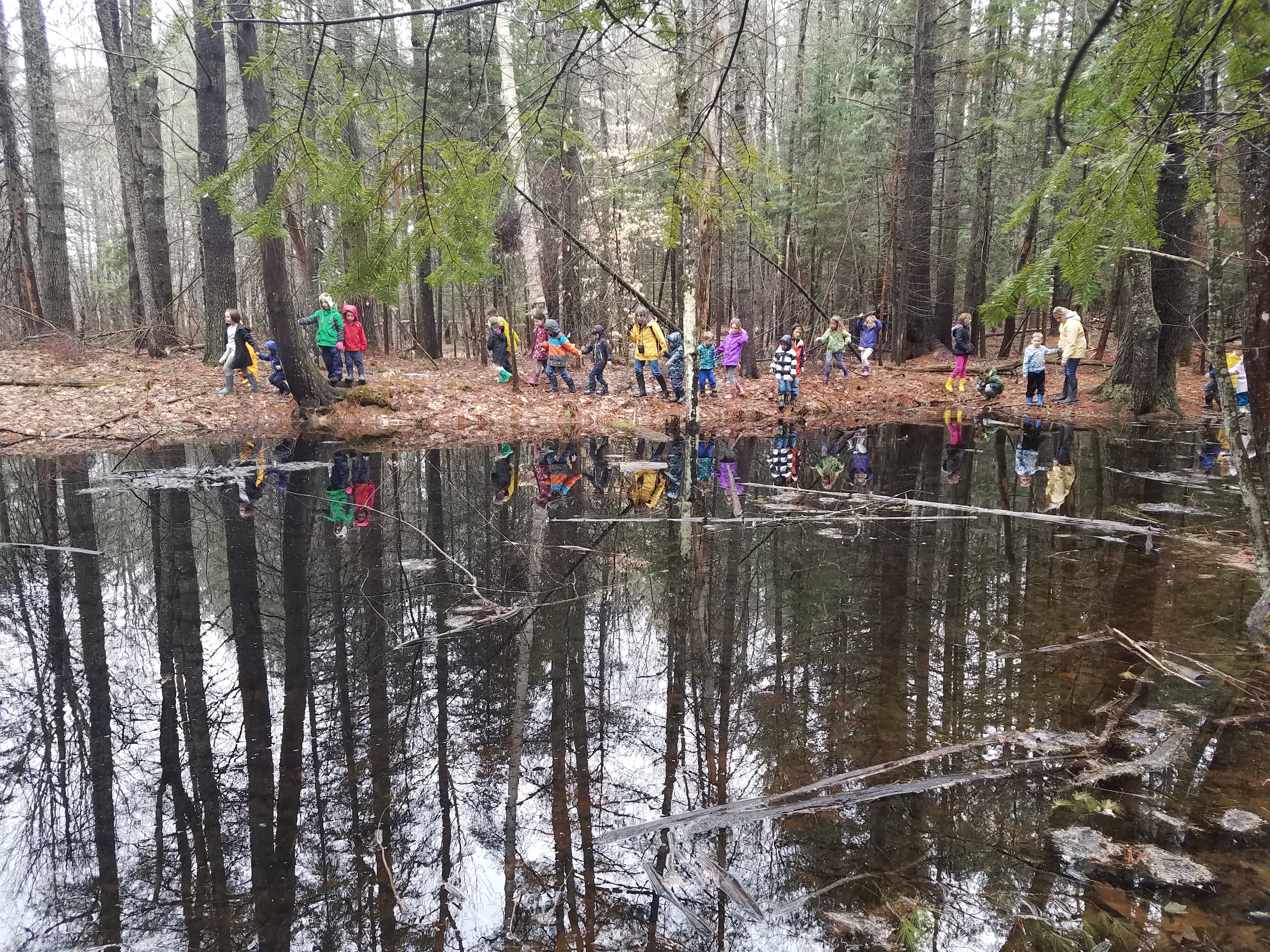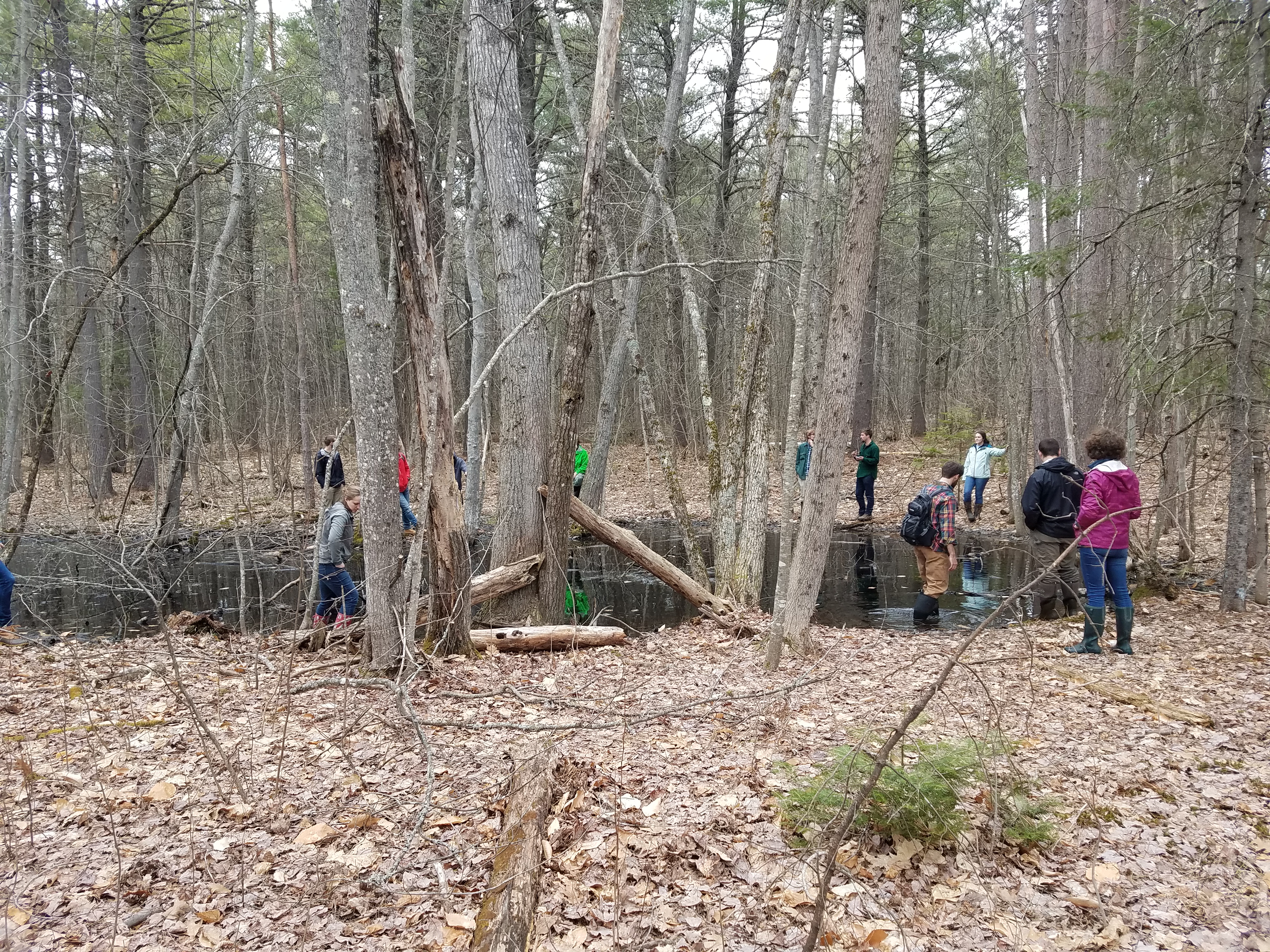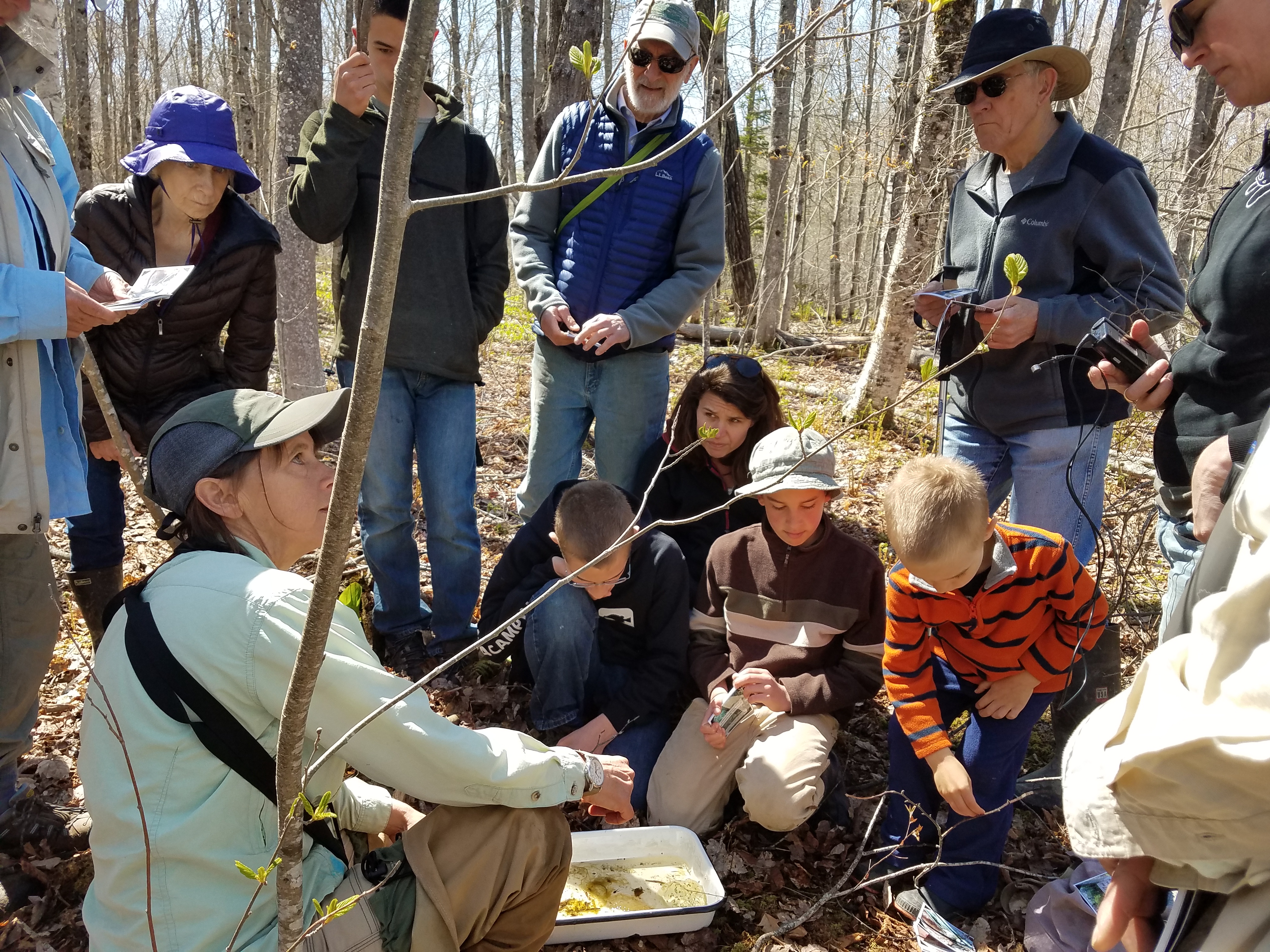 Aram Calhoun, Professor of Wetland Ecology, University of Maine
Aram Calhoun, Professor of Wetland Ecology, University of Maine
Kristine Hoffmann, Post Doctoral Researcher, University of Maine
Warm spring rains (following what seemed to be an extra long winter) brought out not only wood frogs and salamanders but also vernal pool ecologists. In March, April, and May, Aram Calhoun, Elizabeth Hertz, and Kris Hoffmann led vernal pool walks, gave presentations, and interacted with school children. They were fortunate visit the Kennebec Land Trust (Lyceum series), the Friends of Sears Island, the Bangor Land Trust, the Darling Marine Center and surrounding towns, the Northeast Natural History Conference, Hirundo Wildlife Refuge, Stillwater Montessori School, home-schooled children, Bucksport Middle School, UMaine classes, York County Audubon, Maine Lake Science Center, and the Wells Estuarine Reserve (and, boy, are their feet tired). Their enthusiasm rubbed off on our audiences, and we have heard back from groups who have explored more vernal pools on their own, towns interested in moving forward with local regulations, and even one family who used our coloring book as a bedtime story.

We have had some special objectives for this spring’s and future outreach events. Kris Hoffmann focused on family and younger audiences to promote awareness of vernal pools using the new educational materials on our web page. She worked to get students excited about science, biodiversity, and especially the vernal pool animals of Maine through walks, talks, coloring books, and comics. She worked particularly close with Hirundo Wildlife Refuge, which was a sponsor for her work, giving workshops on frog calls and vernal pool walks.
Aram and Elizabeth have been focusing on one of our most important objectives by giving presentations to land trusts, other local conservation organizations, and town officials on the new vernal pool mitigation tool called the Maine Vernal Pool Special Area Program (or SAMP). The tool allows eligible towns to receive partial delegated authority from the BEP, meaning that they can choose to manage vernal pools with different methods than the usual state of Maine vernal pool regulations. The towns can instead look at their own landscape and invite responsible development while enhancing conservation of pools in rural areas (see the SAMP in our web page under publications for details and information on town eligibility). SAMP is offered by our federal and state regulators and was incorporated into Maine’s programmatic permit by the Army Corps of Engineers in 2016. Topsham was the first town to receive this authority in May, and Orono and Topsham will soon join them. We look forward to a busy summer working with other municipalities and land trusts interested in learning more about the VP SAMP and how to make development and conservation strong partners.
 Meggie Harvey, the Science Curriculum Specialist (program Vital Signs) at the Gulf of Maine Research Institute, is working with Aram on a citizen science/teacher initiative to survey vernal pools statewide for fairy shrimp. These inch-long crustaceans are related to sea monkeys (a.k.a. brine shrimp) but are only found in vernal pools, making them an important indicator species. Unfortunately, we know very little about them in Maine. Fortunately, we have tiny scientists in classroom all over the state. Meggie and Aram will work with teachers to take their classes to vernal pools to scout for shrimp and help determine their distribution and habitat preferences.
Meggie Harvey, the Science Curriculum Specialist (program Vital Signs) at the Gulf of Maine Research Institute, is working with Aram on a citizen science/teacher initiative to survey vernal pools statewide for fairy shrimp. These inch-long crustaceans are related to sea monkeys (a.k.a. brine shrimp) but are only found in vernal pools, making them an important indicator species. Unfortunately, we know very little about them in Maine. Fortunately, we have tiny scientists in classroom all over the state. Meggie and Aram will work with teachers to take their classes to vernal pools to scout for shrimp and help determine their distribution and habitat preferences.
Now that spring is coming to a close and our feet have had time to dry after all that pond walking, we’re heading back to our summer habitat – our offices – where we will work until next year’s warm spring rains.
